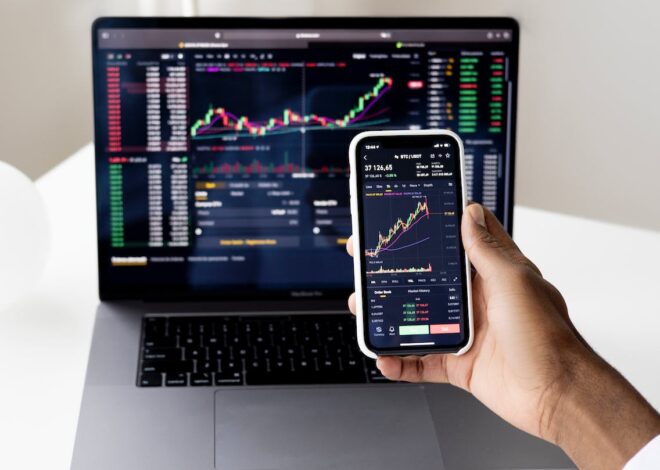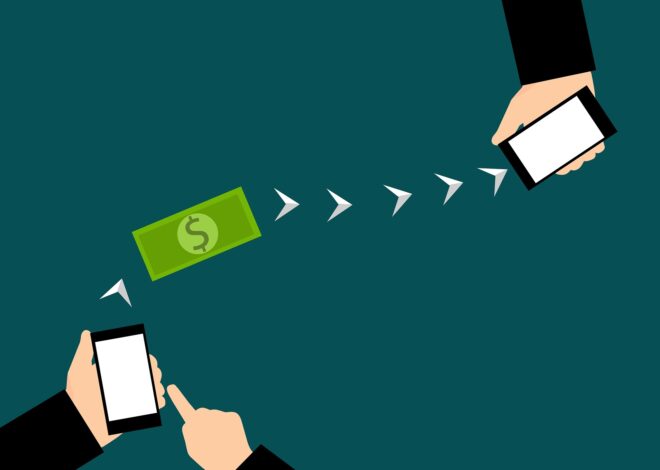
The Ultimate Guide to Secure Mobile Banking
Introduction to Mobile Banking
Mobile banking has revolutionized the way we manage our finances, providing unprecedented convenience and flexibility. It allows us to perform a wide range of financial transactions using mobile devices such as smartphones or tablets, without the need to visit a physical bank branch.
Mobile banking services typically include checking account balances, viewing transaction history, transferring funds between accounts, paying bills, depositing checks, and even applying for loans or credit cards. Some banks also offer advanced features like budgeting tools, investment services, and contactless payments through mobile wallets.
The advent of mobile banking has been driven by the rapid advancement of technology and the increasing penetration of smartphones and internet connectivity worldwide. It is part of a broader trend towards digital banking, which also includes online banking through websites and other digital platforms.
While mobile banking offers numerous benefits, it also comes with its own set of challenges and risks, particularly in terms of security. As financial transactions become increasingly digitized, they become a prime target for cybercriminals. Therefore, understanding how to use mobile banking securely is of utmost importance.
In the following sections of this guide, we will delve deeper into the risks associated with mobile banking, discuss essential security measures, share best practices for secure transactions, and explore how to deal with potential threats. We will also look at the future trends in mobile banking security, providing you with a comprehensive understanding of this important topic. Stay tuned!

Understanding the Risks of Mobile Banking
While mobile banking brings convenience and flexibility, it also introduces a variety of risks that users need to be aware of. These risks primarily revolve around security threats that could potentially lead to financial loss or identity theft. Here are some of the key risks associated with mobile banking:
1. Phishing Attacks: Phishing is a fraudulent attempt to obtain sensitive information such as usernames, passwords, and credit card details by disguising oneself as a trustworthy entity. In the context of mobile banking, you might receive an email or a text message that appears to be from your bank, asking you to update your personal information or verify your account details.
2. Malware: Malware, short for malicious software, refers to any software specifically designed to harm or exploit any computing device or network. Mobile banking users could inadvertently download malware onto their devices, which could then steal their banking information or even take control of their devices.
3. Unsecured Wi-Fi Networks: Using mobile banking apps on unsecured public Wi-Fi networks can expose your sensitive information to hackers. These networks often lack proper encryption, making it easy for cybercriminals to intercept the data being transmitted.
4. Device Theft or Loss: If your mobile device is lost or stolen, and it’s not adequately protected, someone could access your banking app and your financial information.
5. Outdated Software: Failing to update your mobile banking app and your device’s operating system could leave you vulnerable to security threats. Updates often include patches for known security vulnerabilities.
Understanding these risks is the first step towards secure mobile banking. In the next section, we will discuss the essential security measures that can help mitigate these risks.

Essential Security Measures for Mobile Banking
To mitigate the risks associated with mobile banking, it’s crucial to implement certain security measures. Here are some essential steps you can take to ensure your mobile banking experience is as secure as possible:
1. Use Strong and Unique Passwords: A strong password is your first line of defense. It should be complex, with a mix of letters, numbers, and special characters, and it should be unique to your banking app.
2. Enable Two-Factor Authentication (2FA): 2FA adds an extra layer of security by requiring two types of identification before you can access your account. This could be something you know (like a password), something you have (like your phone), or something you are (like a fingerprint).
3. Regularly Update Your Mobile Banking App and Device’s Operating System: Regular updates often include patches for known security vulnerabilities. Keeping your app and device updated ensures you have the latest security protections.
4. Only Use Secure Wi-Fi Networks: Avoid using public Wi-Fi networks for mobile banking. If you must use a public network, consider using a virtual private network (VPN) to encrypt your activity.
5. Install a Reliable Security App: A good security app can protect your device from malware and other threats. Make sure to choose a reputable app from a trusted provider.
6. Lock Your Device: Use a password, fingerprint, or other security feature to lock your device when it’s not in use. This can prevent unauthorized access if your device is lost or stolen.
7. Be Wary of Phishing Attempts: Be cautious of unsolicited communications asking for your personal information. Always verify the source before providing any information.
By implementing these security measures, you can significantly reduce the risks associated with mobile banking and protect your financial information.
Best Practices for Secure Transactions
When it comes to mobile banking, ensuring the security of your transactions is paramount. Here are some best practices you can follow to ensure your transactions are secure:
1. Verify the Recipient: Before making a transaction, double-check the recipient’s details such as their name, account number, and bank. This can help prevent accidental transfers to the wrong account.
2. Use Secure Networks: Always use a secure network when performing mobile banking transactions. Avoid public Wi-Fi networks as they can be easily compromised.
3. Monitor Your Transactions: Regularly review your account statements and transaction history. If you notice any unfamiliar transactions, report them to your bank immediately.
4. Set Transaction Limits: Many banks allow you to set a limit on the amount that can be transferred in a single transaction. This can be a useful tool to prevent large amounts of money from being transferred without your knowledge.
5. Use Two-Factor Authentication (2FA): 2FA provides an additional layer of security by requiring two forms of identification before a transaction can be made.
6. Don’t Share Sensitive Information: Never share sensitive information like your banking password, OTPs, or PIN with anyone. Your bank will never ask for these details over the phone or via email.
7. Log Out After Each Session: Always log out from your mobile banking app once you’ve completed your transactions. This can prevent unauthorized access to your account.
By following these best practices, you can ensure that your mobile banking transactions are secure and protected against potential threats.
Dealing with Mobile Banking Threats
Mobile banking threats can be daunting, but with the right knowledge and tools, you can effectively deal with them. Here are some strategies to handle potential threats:
1. Regularly Update Your Mobile Banking App: Banks often release updates to their mobile apps to address security vulnerabilities and enhance functionality. Regularly updating your app ensures you have the latest security protections.
2. Install a Reputable Security App: A good security app can help protect your device from malware and other threats. It can also alert you to any potential security risks.
3. Be Vigilant About Phishing Attempts: Always be skeptical of unsolicited communications asking for your personal information. If you receive a suspicious email or text message, do not click on any links or provide any information. Instead, contact your bank directly to verify the communication.
4. Use Secure Networks: Avoid using public Wi-Fi networks for mobile banking. These networks can be easily compromised, potentially exposing your sensitive information to hackers.
5. Report Suspicious Activity Immediately: If you notice any suspicious activity on your account, report it to your bank immediately. Quick action can help prevent further damage.
6. Educate Yourself: Stay informed about the latest mobile banking threats and security measures. The more you know, the better you can protect yourself.
Remember, dealing with mobile banking threats is not just about reacting to threats as they occur, but also about proactively taking steps to prevent them. By following these strategies, you can ensure a secure mobile banking experience.
Future of Mobile Banking: Security Trends and Predictions
As we look towards the future of mobile banking, it’s clear that security will continue to be a top priority. With the increasing sophistication of cyber threats and the growing reliance on mobile banking, the industry is poised for significant changes in the coming years. Here are some trends and predictions that could shape the future of mobile banking security.
Increasing Use of Biometrics
Biometric technology, which includes fingerprint scanning, facial recognition, and voice identification, is expected to become more prevalent. These methods provide a higher level of security than traditional passwords and are more convenient for users. However, they also raise new challenges, such as the need to protect sensitive biometric data from hackers.
Advanced Authentication Methods
Multi-factor authentication (MFA) is likely to become the standard for mobile banking. MFA requires users to provide two or more verification factors to gain access to a resource such as an application. This adds an additional layer of security, making it harder for unauthorized users to gain access.
AI and Machine Learning
Artificial Intelligence (AI) and machine learning technologies are set to play a bigger role in detecting and preventing fraudulent activities. By analyzing patterns and behaviors, these technologies can identify suspicious activities more accurately and take swift action.
Blockchain Technology
Blockchain technology could be used to enhance security in mobile banking. With its decentralized nature, blockchain can provide a secure way for transactions to be recorded and verified. This could help prevent fraud and ensure the integrity of financial transactions.
Privacy Enhancements
As consumers become more aware of their digital privacy, banks will need to implement more robust privacy protections. This could include “privacy by design” approaches, where privacy considerations are integrated into the design of new services and features from the outset.
Regulatory Changes
Regulations related to data protection and privacy are likely to become stricter in the future. Banks will need to stay up-to-date with these changes to avoid hefty fines and reputational damage.
In conclusion, the future of mobile banking security looks to be shaped by technological advancements, evolving consumer expectations, and regulatory changes. While these developments present new challenges, they also offer opportunities for banks to enhance their security measures and build trust with their customers. As always, staying ahead of the curve will be key to maintaining a secure and successful mobile banking platform.








